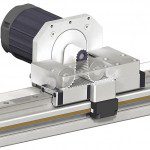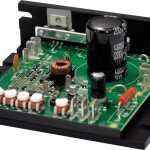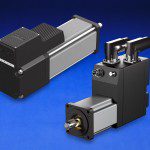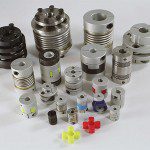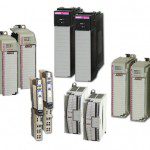Updated February 2020 || The function of a gear is to mesh with other gears to transmit altered torque and rotation. In fact, gearing can change the speed, torque and direction of motion from a drive source. Geometry & general gear design When two gears with an unequal number of teeth engage, the mechanical advantage […]
FAQs + basics
What are Motion Control Networks? Technical Summary
Multi-axis motion control typically uses event-based synchronization. This level of synchronization is defined as scheduled, absolute hard delivery of time-critical cyclic data across the network. Delivery variability must be less than 1 µs, which is also known as jitter. While a number of networks exist for “motion control,” it is important to define the time […]
What is linear motion design engineering? Technical summary
Linear motion is an area of motion control encompassing several technologies including linear motors, linear actuators, and linear rolling guides and bearings, among others. Linear motors — an accurate option Traditional linear motors are basically a permanent magnet rotary motor rolled out and laid flat. It’s as if the stator and rotor were cut along […]
What is a motor drive? Summary for design engineers
Some drives are wholly incorporated into the controller, so that the profile generation takes place in the controller as well as the torque command for the motor. On the other hand, a drive can also refer to the specific power electronic circuitry needed to drive the motor. Electric motors that drive industrial machines need some […]
What are Retaining Rings? Summary for Motion Engineers
Retaining rings are fasteners that hold together components on a shaft when installed in a groove. There are three main types of retaining rings; tapered section, constant section and spiral. Tapered section rings are characterized by their decreasing thickness from the center of the ring out to the ends. These rings can be mounted either […]
What are servomotors and integrated servomotors? Summary for design engineers
Updated May 2018 by Lisa Eitel || Nailing down the features of a servomotor is a tricky exercise, but the hallmark of any servomotor is the presence of feedback and closed-loop control. Servomotors provide precise control of torque, speed or position using closed-loop feedback. They can also operate at zero speed while maintaining enough torque to maintain a […]
What are Flexible Couplings? Summary for Motion Engineers
Couplings join together two shafts as a way of transmitting power from one to the other. It is part of the drivetrain which may include other power transmission components such as lead screws or ball screws, gearboxes, belts and pulleys or chains. There are two fundamental types of couplings; rigid and flexible. Rigid couplings are […]
What is a Servo Controller? Summary for Motion Engineers
More specific types of controllers, such as servo controllers, are used to control servomotors. When dealing with servo systems, it’s important to note that definitions for servomotor, servo system, and servo controllers can differ widely throughout industry. When selecting a servo system for an application, it’s best to ask suppliers what exactly their offerings entail. […]
What are programmable logic controllers (PLCs)? A technical summary
Updated May 2015 || Programmable logic controllers — or PLCs — are highly specialized, programmable microprocessor-based controllers used to control a specific application on a machine or a process. They are used in automation and manufacturing to control assembly lines and machinery on factory floors as well as many other types of mechanical, electrical, and electronic equipment in a plant. […]
What is a VFD (Variable Frequency Drive)? Technical Summary
What is a VFD? Variable-frequency drives, or VFDs, are a means of controlling the speed of an ac motor, typically an ac induction motor. It does so by varying the frequency of the power source. VFDs operate by switching their output devices, which can be transistors, IGBTs, or thyristors, on and off. VFDs can be […]



